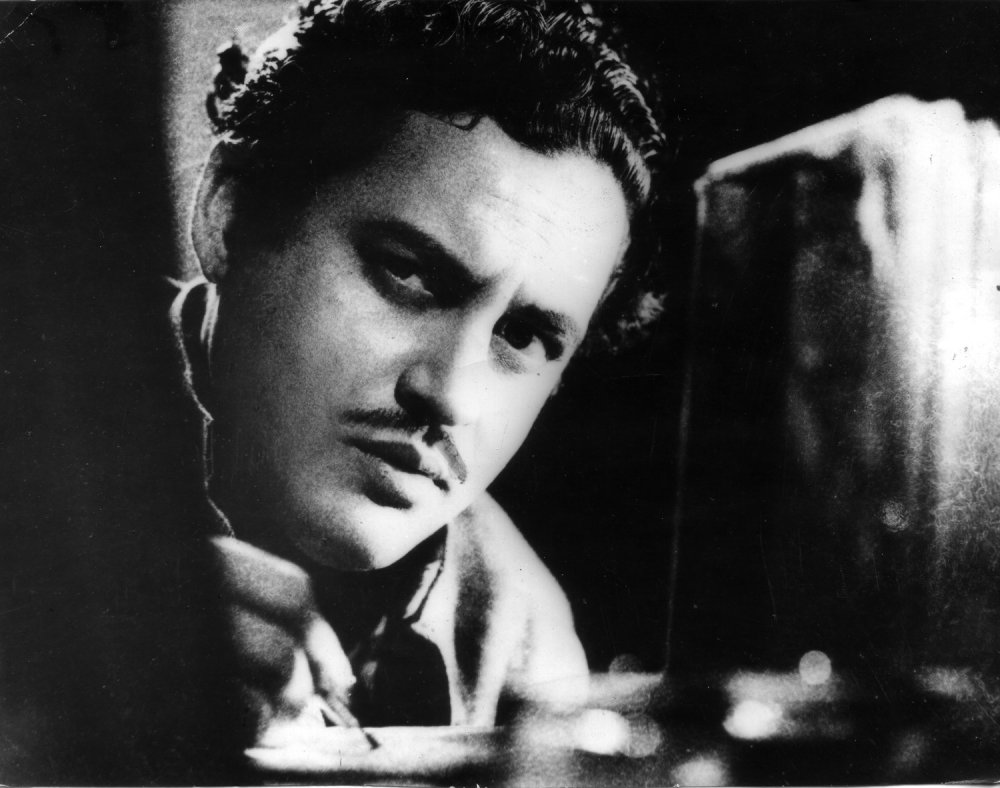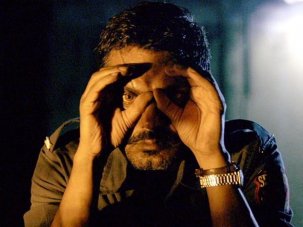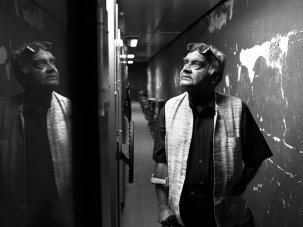As India has the largest film industry in the world, and since stardom is at least as central to it as it is to Hollywood, then Indian movie stars warrant our attention. But where to start?
A Guru Dutt retrospective runs through June 2017 at the BFI Southbank, part of the India on Film celebrations running until December 2017.
The most obvious place is 1970s megastar Amitabh Bachchan, who, though sometimes compared to Sean Connery, is without parallel in Western cinema. His films were the biggest Hindi movies of their time, his screen persona a cross between a samurai, Robert De Niro’s early brooding rebels and, in 1975’s archetypal Sholay, a doomed crook hired to hunt and kill a brigand. Bachchan’s films often touched on class struggles so it was perhaps no surprise when he became an MP in 1985.
Shah Rukh Khan, India’s Tom Cruise, has a screen persona that’s less serious, more 1980s than Bachchan’s. Or what about ex-Miss World Aishwarya Rai, the star of Bride & Prejudice, who in following in the footsteps of Catherine Deneuve in becoming the face of L’Oreal seemed to cross a threshold in the Asianisation of female cine-celebrity? Or the sublime Sharmila Tagore, who was discovered by Satyajit Ray and became a figure of fascination and sexual daring, rather like Elizabeth Taylor? Tagore’s portrayal of a young woman whose father-in-law dreams that she is a goddess and so becomes one in Ray’s Devi (1960) is still one of the great performances in cinema, comparable to Falconetti’s in Dreyer’s La Passion de Jeanne d’Arc. Tagore was just 14 at the time.
Studying this quartet would reveal much about India’s film-celebrity structure, but the career of Guru Dutt goes deeper. His downcast loners in films of the 1950s and early 60s signalled that, the upbeat tone of much of Hindi All India cinema notwithstanding, all was not well in reformist India. He could smile like Bachchan and romance like Khan, but his career was more complex than either, combining, in Western terms, those of John Garfield and Orson Welles.
Musical masculinity
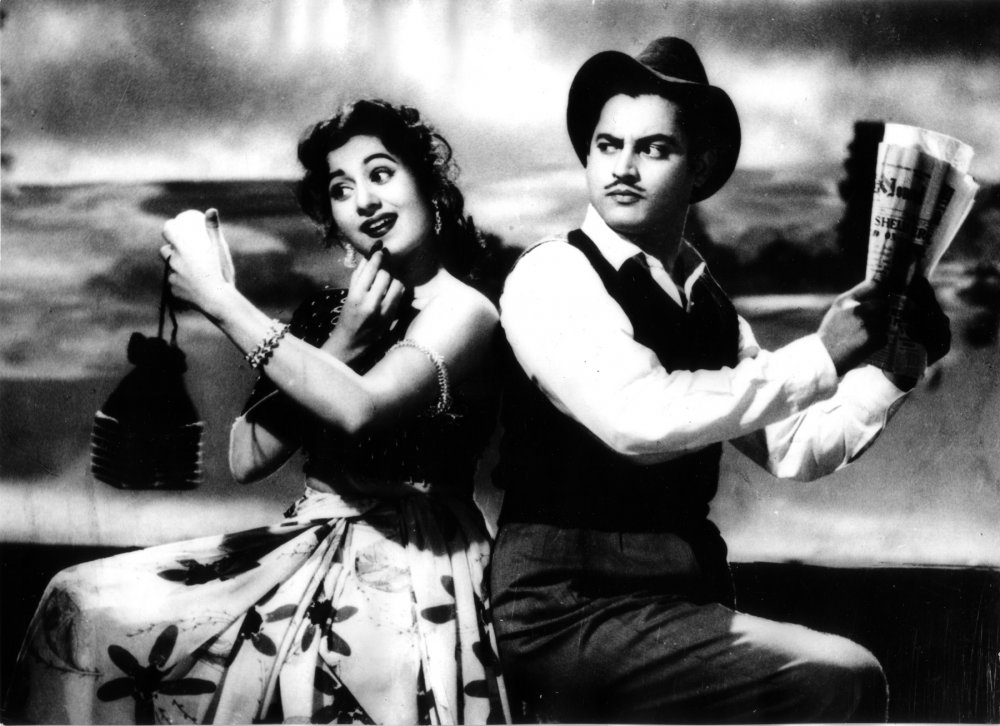
Guru Dutt and Madhubala in Mr & Mrs '55 (1955)
Dutt was born in southern India (the exact location is disputed) in 1925. He was educated in Bengal in the 1940s, giving him a front-row seat at India’s tragic historical pageant and engendering a sense of social concern. To this he added dance, studying at Uday Shankar’s dance school and becoming a choreographer. From there he headed west to the great Prabhat Studios in Pune, to learn filmmaking from behind the camera.
His debut as an actor, aged 20, in a bit part in the pious religious drama Lakhrani (1945), was without distinction, but Mr and Mrs ’55, a social comedy made ten years later, shows how far he had come. Here Dutt plays a dirt-poor cartoonist who ends up marrying a rich girl because her father’s will insists on it, so she might avoid the stem feminism of her aunt.
The film starts like a Cukor comedy, full of women – mobile, expressive and well observed. Then Dutt has his first scene and we see why he is a star. His face is so still, his performance so understated that he seems to stop the whirl of action. In Western cinema actors such as James Stewart and Marlene Dietrich pulled similar tricks: in their introductory moments their quiescence, compared with the throng around them, is arresting. In All India Hindi cinema such stillness is an even greater gear-change because of the degree of movement that often precedes it. In Mr and Mrs ’55 Dutt, like John Garfield, brings an instant hit of realism to the movie, which continues to swish along in the women-only sections but otherwise can’t resist his slow, gravitational pull.
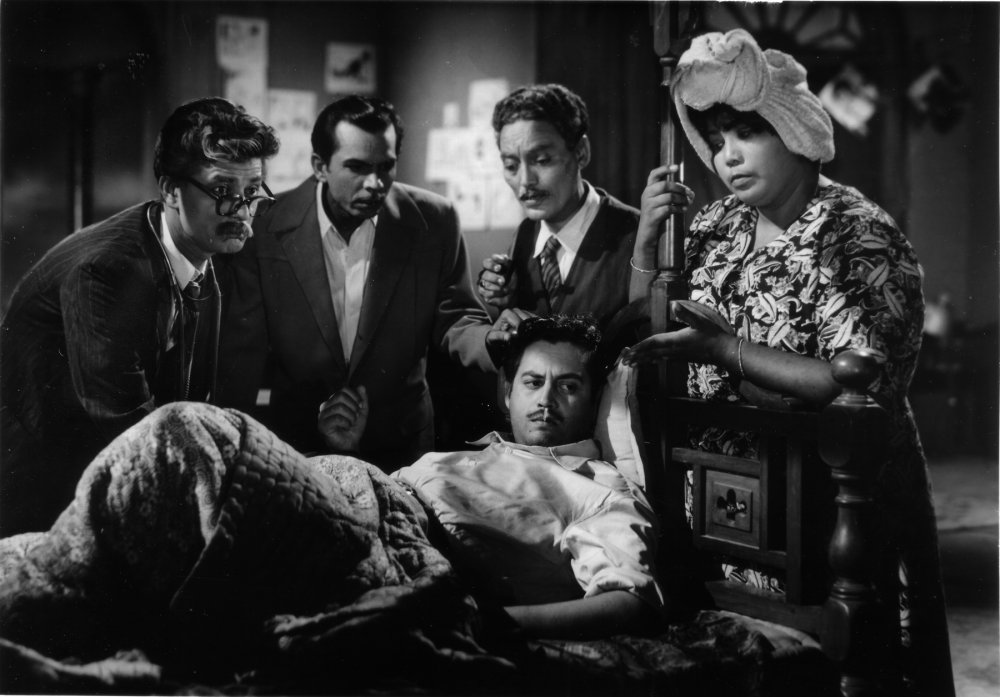
Guru Dutt in Mr & Mrs '55 (1955)
A few minutes after his first appearance in Mr and Mrs ’55 Dutt tells a friend how he met the girl whose handkerchief he is carrying; but this being an Indian film, he does so in song, in a bar, then waiting for a bus, then on the bus, then when they’ve been thrown off. It’s hard to imagine Garfield doing musical numbers – and Dutt’s performance of this one is at no point frittery – but herein lies the first complexity of Indian male movie-stardom: its masculinity has to be both authentic (as Dutt’s was and Bachchan’s is) but also choreographed, musical and displayed in ways to which actors like Garfield or Robert Mitchum could never stretch. To do so would have undermined their solidity, yet Dutt’s screen persona bolts male lonerism to the aesthetics of dance in a remarkably coherent way.
That he had been a choreographer must have helped, but one key point is missing here. Indian musical numbers are usually shot to playback (hence their visual kinetics), and playback stars are often as famous as the actors themselves (indeed in 1953 Dutt married one of the best known, Geeta Roy). The songs are compiled and released separately from the films, and far from hiding behind the actors (as, for instance, Marni Nixon was forced to with Audrey Hepburn on My Fair Lady and Natalie Wood on West Side Story), Indian playback artists ‘co-star’ with them, sharing the press coverage and fame. To that extent Hindi stars are co-stars, their privileged and rewatched moments shared moments.
Dual career
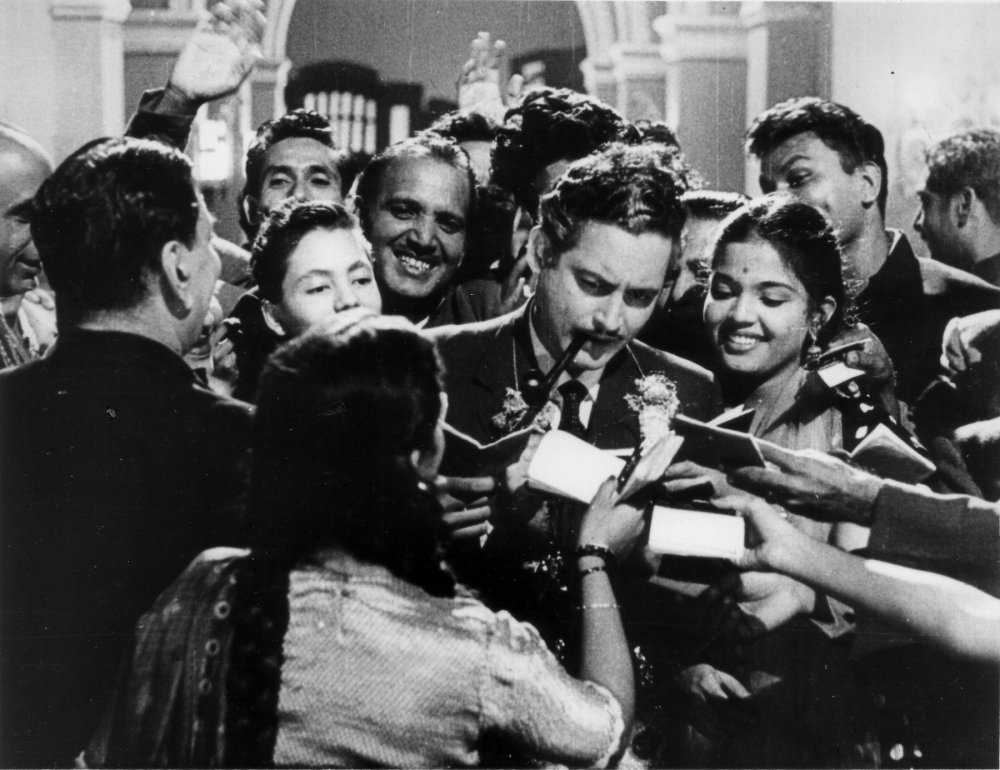
Dutt in Paper Flowers
Four years after Mr and Mrs ’55 Dutt played the lead in India’s first CinemaScope film, Paper Flowers (Kaagaz ke Phool, 1959), about a filmmaker who has lost the will to live and for whom happiness is transient. He marries into a rich family who decry the “dirty world of films” and, by implication, his lack of social standing. He throws himself into the shooting of a new version of Devdas, one of Indian cinema’s most remade stories, but shares his in-laws’ distaste. He makes a rotten film, yet audiences cheer. Years later, after the indignity of becoming a bit player, he kills himself.
In the context of Indian cinema, the pessimism of Dutt’s performance in Paper Flowers is a surprise. His character Suresh Sinha hates both himself and the glamour of the most showy film industry in the world. In the closing scenes, as Sinha runs through a windswept back lot from his former wife who has spotted him demeaned and abject, the movie’s symbolism is revealed in the line “visit not the gardens where paper flowers bloom”. In other words, stay clear of Bollywood.
Paper Flowers, which is as caustic about mainstream cinema as Mankiewicz’s The Barefoot Contessa or Minnelli’s The Bad and the Beautiful, is central to Dutt’s career not just because it contains his darkest performance. As with Mr and Mrs ’55, Dutt also directed it. In the west we have occasional actor-directors such as Chaplin, Welles, Woody Allen and Clint Eastwood as well as the many one-off vanity films directed by actors, but in India the dual careers of figures like Dutt or Raj Kapoor are far from unusual.
This was Dutt’s tenth film, on eight of which he called the shots, so he controlled his screen persona to a remarkable degree. Just as he halved his stardom with his playback singers, so he doubled his celebrity by directing as well as performing. The kinetic shooting style of Mr and Mrs ’55, which his own performance partially undermines, was devised by Dutt himself.
And alongside Paper Flowers scenes of tar-black bitterness are classic musical numbers like Time Has Inflicted Such Sweet Sorrow on Us, in which the camera sweeps through space with as much joy as Minnelli’s at his best. Set in a movie studio, the song pictures Dutt as he tries to cast a young actress in Devdas; he is Gene Kelly to her Leslie Caron in the Place de la Concorde in An American in Paris. An oblique shard of light slices through the studio as Dutt has his camera withdraw and whirl around the illuminated couple. Despite such coups de cinema, however, Paper Flowers failed at the box office.
Heart of darkness
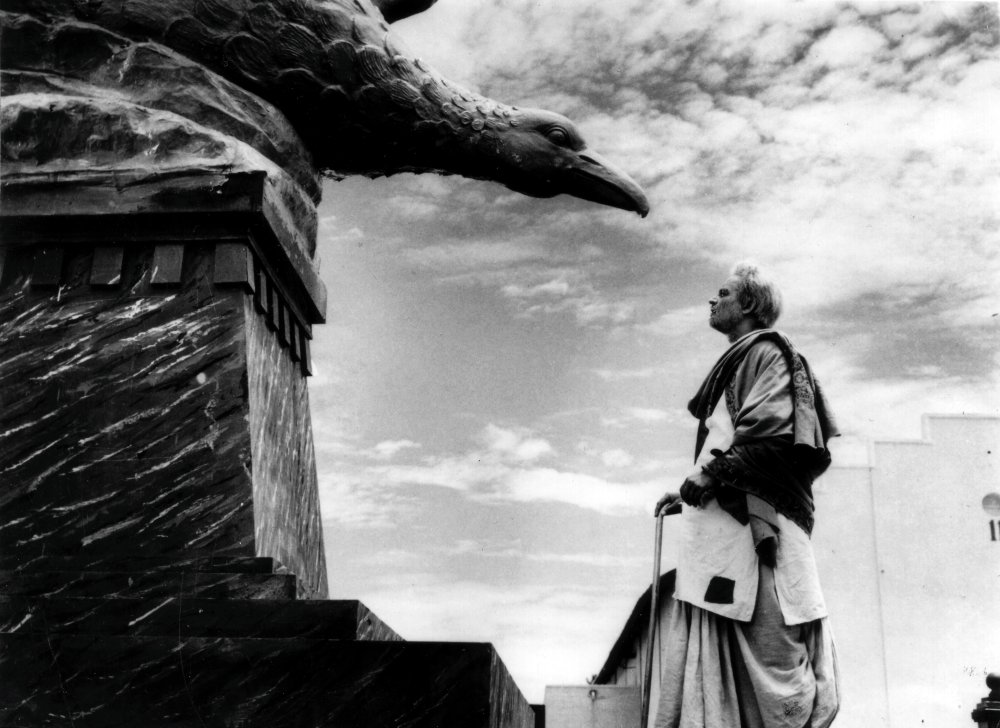
Paper Flowers (Kaagaz ke Phool, 1959)
Ashish Rajadhyaksha and Paul Willemen in their Encyclopaedia of Indian Cinema suggest that Paper Flowers is Dutt’s Citizen Kane. There are certainly parallels: the flashback structure; the idea of a hollow life; the combination of pessimism and the baroque. Dutt’s next film shows that the comparison with Welles holds.
Sahib Bibi Aur Ghulam (1962) – on which Dutt took the credit of producer though many feel that he, as much as his screenwriter Abrar Alvi, directed it – is his The Magnificent Ambersons. Set in feudal 19th-century Calcutta, it charts the decline of a Bengali family living in a grand mansion.
It starts with the mansion being demolished. The workers take a break, leaving Dutt, their overseer, alone in its semi-ruins. Shadows fall across his face. The camera begins to glide like a phantom and a haunting voice sings of past events, of days of richness. We flashback to see Dutt, a young, educated villager, arriving at the mansion in its heyday. He gets a job nearby but soon becomes attached to Meena Kumari’s beautiful but lonely lady of the house.
Where the owners’ scenes are shot with the filigreed detail of a Josef von Sternberg film, Dutt’s character is associated with darkness and visual simplicity. He anchors the film, and as you watch you realise that Dutt anchors nearly every film he’s in. In Mr and Mrs ’55 he counteracts the swirl of the story; in Paper Flowers he longs for such calm certainty; here he stands outside the decadence that the film indicts. Worn down by torment and excess, the Brahmin Bengalis fall from grace as, in parallel, Dutt’s character rises, losing his villager naivety and detaching himself from their values. Whereas in Humphrey Bogart’s signature roles he starts distant and cynical and reluctantly engages with the world, Dutt’s characters do the opposite, gradually decoupling themselves from what they see as a sinking ship – whether that ship is a mansion, a film industry or India itself.
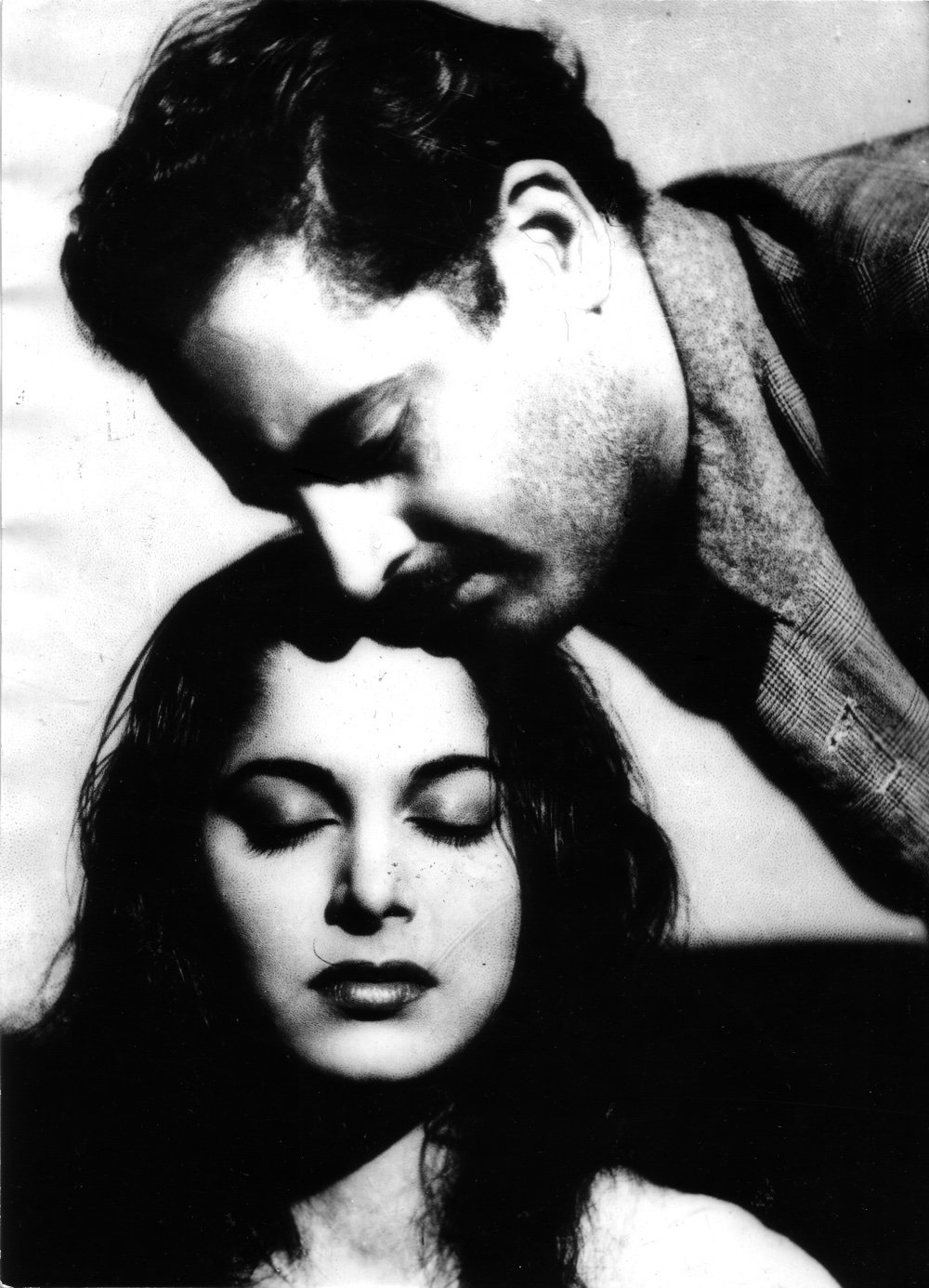
Guru Dutt and Waheeda Rehman in Pyaasa (1957)
Dutt clearly knew what made stardom tick, so it comes as no surprise that he was also a star-maker. Waheeda Rehman was just 19 in 1957 when he cast her as a prostitute in Pyaasa but so vital was her performance that she became associated with his career thereafter. In Paper Flowers she plays the newcomer he tries to cast in Devdas and subsequently falls in love with; her dance near the start of Sahib Bibi Aur Ghulam is among the most seductive in all cinema.
Yet while such individual moments of display are important in Dutt’s films, it’s how they harmonise with the whole that matters. Here Rehman’s youthful sensuality contrasts with the film’s greatest performance, from Meena Kumari as the bored wife slipping into alcoholism and relinquishing her hold on her husband.
In other Indian directors’ films there are examples of what I call the ‘reverie cut’: the actor’s head falls to one side, their eyes glaze, they melt out of the reality of the scene into a defocused state. Uniquely in Indian cinema, such moments liberate the director to cut to an unmotivated camera position: the actor enters a reverie and the rules of montage are suspended. The intensity of Kumari’s performance and the dreaminess of parts of Sahib Bibi Aur Ghulam allow Dutt such lapses in the hard structure of his aesthetic. But his own acting could never occasion such cuts – his characters never bend with the story but against it, away from others’ falls from grace.
Instinctively downbeat
Hindsight renders Dutt’s films and performances tragic. In October 1964, aged 39, eerily echoing his character in Paper Flowers, he took an overdose of painkillers and died. His marriage to Geeta had split up, allegedly over an affair he was having with Rehman. That Rehman plays the seductress in Sahib Bibi Aur Ghulam and Dutt’s wife was that film’s chief playback singer makes it too seem prophetic.
While Western critics admire The Barefoot Contessa or The Bad and the Beautiful, they seldom mention Paper Flowers. Likewise when they discuss lighting in cinema they fail to acknowledge the visual brilliance of Sahib Bibi Aur Ghulam. The Welles in Dutt deserves far more recognition.
But it is the John Garfield in him that is to be particularly admired. Dutt was a determined, troubled movie star in the complex Indian manner. He created his own screen persona and those of others. He was instinctively downbeat in a film world otherwise inclined, and his characters were variously autobiographical. Dutt was one of the great, brooding figures in post-Independence Indian cinema.
-
The Digital Edition and Archive quick link
Log in here to your digital edition and archive subscription, take a look at the packages on offer and buy a subscription.




